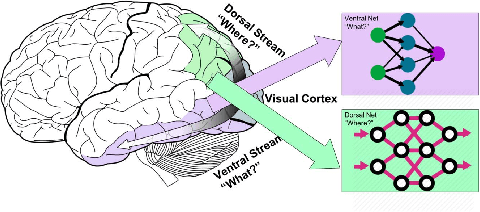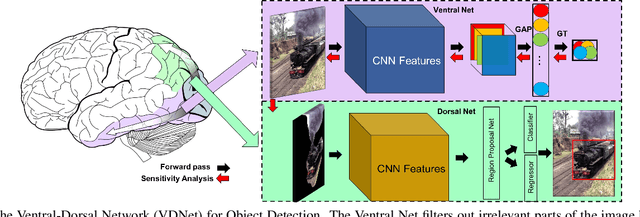Jackson L. Reese
Ventral-Dorsal Neural Networks: Object Detection via Selective Attention
May 15, 2020



Abstract:Deep Convolutional Neural Networks (CNNs) have been repeatedly proven to perform well on image classification tasks. Object detection methods, however, are still in need of significant improvements. In this paper, we propose a new framework called Ventral-Dorsal Networks (VDNets) which is inspired by the structure of the human visual system. Roughly, the visual input signal is analyzed along two separate neural streams, one in the temporal lobe and the other in the parietal lobe. The coarse functional distinction between these streams is between object recognition -- the "what" of the signal -- and extracting location related information -- the "where" of the signal. The ventral pathway from primary visual cortex, entering the temporal lobe, is dominated by "what" information, while the dorsal pathway, into the parietal lobe, is dominated by "where" information. Inspired by this structure, we propose the integration of a "Ventral Network" and a "Dorsal Network", which are complementary. Information about object identity can guide localization, and location information can guide attention to relevant image regions, improving object recognition. This new dual network framework sharpens the focus of object detection. Our experimental results reveal that the proposed method outperforms state-of-the-art object detection approaches on PASCAL VOC 2007 by 8% (mAP) and PASCAL VOC 2012 by 3% (mAP). Moreover, a comparison of techniques on Yearbook images displays substantial qualitative and quantitative benefits of VDNet.
 Add to Chrome
Add to Chrome Add to Firefox
Add to Firefox Add to Edge
Add to Edge